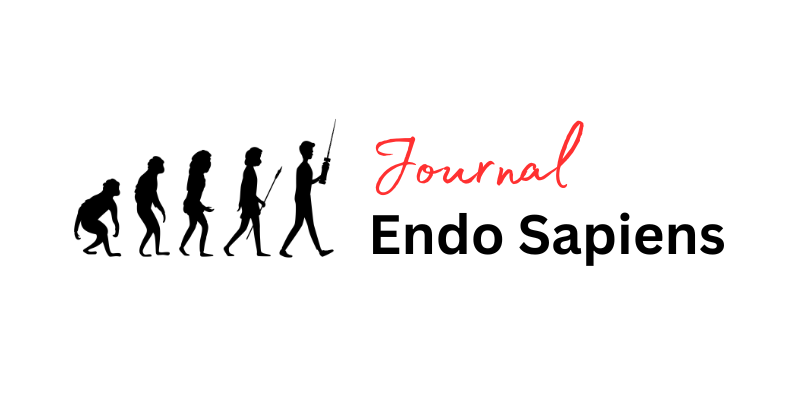
case report
Extraosseous inflammatory lesion of endodontic origin in a mandibular premolar with failing root canal treatment. A case report
Domenico Ricucci, MD, DDS 1
Simona Loghin, DDS 2
Stephen Smith, BDS, MDentSci, FDSRCSEd, FDSRCSEng, MRDRCSRCPS, FDS(Rest Dent)RCSEng 2
Craig S. Schneider, DDS 3
Isabela N. Rôças, DDS, MSc, PhD 4
José F. Siqueira Jr, DDS, MSc, PhD 4
https://doi.org/10.71347/cghr45d6
1 Private practice, Cetraro, Italy
2 Private practice, London, UK
3 Private practice, Columbia, Maryland and Postgraduate Program in Endodontics, University of Maryland, Baltimore, Maryland, USA
4 Postgraduate Program in Dentistry, Grande Rio University (UNIGRANRIO), Rio de Janeiro, RJ, Brazil
Corresponding author:
Dr. Domenico Ricucci, Piazza Calvario, 7, Cetraro (CS) 87022, Italy.
E-mail address: dricucci@libero.it
Key words: apical periodontitis; extraosseous lesion; root canal infection; bacterial biofilm; root canal treatment failure
Acknowledgements: The authors deny any conflicts of interest
Abstract
Background: This article reports on a case of extraosseous inflammatory lesion of endodontic origin (EILEO) that was recalcitrant to nonsurgical root canal treatment and was caused by a complex intraradicular and extraradicular bacterial infection.
Case description: The histopathological and histobacteriological aspects of the biopsy specimen were evaluated. The affected tooth was a mandibular premolar that exhibited an abraded crown with exposed dentin and enamel cracks, but no caries. The patient reported previous abscess episodes and presented with symptoms and a sinus tract. Nonsurgical root canal treatment was not effective in controlling infection, even after using ultrasonic agitation of irrigants and intracanal medication. Surgery was indicated and the biopsy specimen including the extraosseous extension was processed for histopathological and histobacteriological analyses. Bacterial infection in the form of biofilms and planktonic cells was observed not only in the main apical root canal, but also in ramifications and extending to the extraradicular environment. The intraosseous part of the lesion showed severe inflammation in the areas surrounding the root apex and the extraradicular biofilms. The extraosseous tissue showed an abundance of collagen fibers externally, and inflammatory tissue layering the sinus tract internally.
Conclusion: EILEO can be regarded as a different manifestation of apical periodontitis and its prevalence and clinical implications remain to be clarified.
Introduction
Apical periodontitis is an inflammatory disease caused by bacterial infection of the root canal system (Ørstavik 2020). The disease may have different clinical manifestations, but radiographically it is usually associated with a radiolucent area in the bone tissue apically or laterally to the root. This is caused by bone resorption that affects the cancellous and, in many cases, can evolve to perforate the cortical plate (Jalali et al. 2019).
Arnold M, Ricucci D, Siqueira JF, Jr. (2013) Infection in a complex network of apical ramifications as the cause of persistent apical periodontitis: a case report. Journal of Endodontics 39, 1179-84.
Aveiro E, Chiarelli-Neto VM, de-Jesus-Soares A et al. (2020) Efficacy of reciprocating and ultrasonic activation of 6% sodium hypochlorite in the reduction of microbial content and virulence factors in teeth with primary endodontic infection. International Endodontic Journal 53, 604-18.
Baumgartner JC, Picket AB, Muller JT (1984) Microscopic examination of oral sinus tracts and their associated periapical lesions. Journal of Endodontics 10, 146-52.
Jalali P, Tahmasbi M, Augsburger RA, Khalilkhani NK, Daghighi K (2019) Dynamics of Bone Loss in Cases with Acute or Chronic Apical Abscess. Journal of Endodontics 45, 1114-8.
Love RM (1996) Bacterial penetration of the root canal of intact incisor teeth after a simulated traumatic injury. Endodontics and Dental Traumatology 12, 289-93.
Loyola-Fonseca SC, Campello AF, Rodrigues RCV et al. (2023) Disinfection and shaping of Vertucci class ii root canals after preparation with two instrument systems and supplementary ultrasonic activation of sodium hypochlorite. Journal of Endodontics 49, 1183-90.
Nakamura VC, Pinheiro ET, Prado LC et al. (2018) Effect of ultrasonic activation on the reduction of bacteria and endotoxins in root canals: a randomized clinical trial. International Endodontic Journal 51 Suppl 1, e12-e22.
Ørstavik D (2020) Apical periodontitis: microbial infection and host responses. In D Ørstavik ed. Essential endodontology, 2nd edn; pp. 1-10. Oxford, UK: Wiley Blackwell.
Pereira TC, Dijkstra RJB, Petridis X et al. (2021) Chemical and mechanical influence of root canal irrigation on biofilm removal from lateral morphological features of simulated root canals, dentine discs and dentinal tubules. International Endodontic Journal 54, 112-29.
Ricucci D, Siqueira JF, Jr. (2008) Apical actinomycosis as a continuum of intraradicular and extraradicular infection: case report and critical review on its involvement with treatment failure. Journal of Endodontics 34, 1124-9.
Ricucci D, Siqueira JF, Jr., Loghin S, Berman LH (2015a) The cracked tooth: histopathologic and histobacteriologic aspects. Journal of Endodontics 41, 343-52.
Ricucci D, Siqueira JF, Jr., Lopes WS, Vieira AR, Rôças IN (2015b) Extraradicular infection as the cause of persistent symptoms: a case series. Journal of Endodontics 41, 265-73.
Rôças IN, Provenzano JC, Neves MS, Alves FRF, Goncalves LS, Siqueira JF, Jr. (2023) Effects of calcium hydroxide paste in different vehicles on bacterial reduction during treatment of teeth with apical periodontitis. Journal of Endodontics 49, 55-61.
Saini A, Nangia D, Sharma S et al. (2023) Outcome and associated predictors for nonsurgical management of large cyst-like periapical lesions: A CBCT-based prospective cohort study. International Endodontic Journal 56, 146-63.
Schneider SC. The Role of Extraosseous Lesions in Orofacial Pain: Newly Discovered Extensions of Odontogenic Lesions Cause Pain That Mimics Non-odontogenic Pain [Webinar]. AAE Endo On Demand. 2021.
Taylor RD (1966) Modification of the Brown and Brenn Gram stain for the differential staining of gram-positive and gram-negative bacteria in tissue sections. American Journal of Clinical Pathology 46, 472-6.
